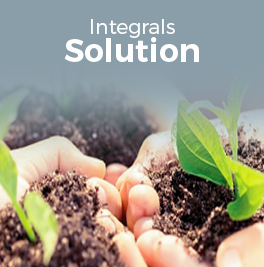Recycling
Recovering for another use a material that would otherwise be considered waste. The popular meaning of recycling is the storage and reuse of disposable items for daily use. These are collected and classified into homogeneous groups, so that their raw material can be used again.
Collection and transport
It consists of collecting solid waste from the classification point or from the collection points of each area, using motorized vehicles (truck, collector, truck crane), to the treatment, temporary storage or final disposal areas.
Waste recovery
Use of the resources contained in the waste in order to use it as a total or partial substitute for first-generation raw materials in a production process.
Natural resources
Those that exist in the environment and are consumed with use.
Renewable resources
Resources that are available at different time intervals. The use of current sources does not diminish the future disposition as long as the consumption rate does not exceed the generation rate.
Reduce
Reduce the size of a waste for subsequent recycling, increasing space and extending the capacity of recycled waste.
Reforestation
Renewed planting of felled or destroyed trees.
Landfill
The sanitary landfill solution for the final disposal of MSW takes into account sanitary engineering principles for the adequate final disposal of waste in order to avoid risks to public health and the environment.
Fixed residue
Solid matter resulting from the calcination of the dry residue.
Industrial waste
Industrial material or by-product that no longer has economic value or utility, and must be disposed of.
Waste
Those products, materials or elements that, after being produced, manipulated or used, have no value for whoever owns it and therefore discards it.
Industrial waste
It is all that solid or liquid waste, or combinations of these, from industrial processes and that due to their physical, chemical or microbiological characteristics cannot be assimilated to household solid waste.
Inert waste
Those that once deposited in the landfill do not change their nature.
PCB waste
Polychlorinated biphenyls or PCBs are synthetic organic chemicals called chlorinated hydrocarbons. Which constitute a sub-series of PCBs or polychlorinated biphenyl, non-biodegradable non-combustible viscous substance or fluids used as additives in dielectric oils, marine paints and others.
Dangerous residues
Waste that has intrinsic properties that pose health hazards. Dangerous properties are toxicity, flammability, chemical reactivity, corrosivity, explosivity, reactivity, radioactivity or of any other nature that causes damage to human health and the environment.
Incinerable hazardous waste
Waste that, due to its composition, cannot be treated by any recovery system and for which the optimal management is incineration. It is mostly waste with a high organic component.
Chemical wastes
Product of a reaction that is apparently of no interest to the experimenter. It also refers to a compound that is contaminated or that, due to its manufacturing date, its properties are no longer of interest or utility.
Sanitary waste
Landfill disposal is the most traditional method of garbage collection, and remains a common practice in most countries. Historically, landfills were established in disused quarries, abandoned mines, etc.
Household solid waste
Garbage or waste generated in homes, business premises and food outlets, hotels, schools, offices and prisons, in addition to waste from pruning and free fairs, therefore, the total DR generated has a double component, on the one hand the fraction that continues its course to a sanitary landfill, and another that continues its course towards recycling.
Non-hazardous solid waste
Waste produced by the generator in any place and in the course of its activity, which does not present a risk to human health or the environment.
Hazardous solid waste
Wastes that may present a risk to public health or cause adverse effects to the environment.
Urban or municipal waste
Waste generated in private homes, shops, offices and services, as well as all those that do not have the classification of dangerous and that by their nature or composition can be assimilated to those produced in the previous places or activities.
Reuse
Action of reusing the goods or products and giving them another use. It is any operation by which the waste is reused for a different purpose for which it was conceived.
Mining Tailings
The tailings (or tail) is a set of toxic waste from mining processes of the concentration of minerals, usually constituted by a mixture of crushed rocks, water and gangue minerals (or without commercial value), although low concentrations of metals are also found heavy metals such as copper, lead, mercury, and metalloids such as arsenic.


